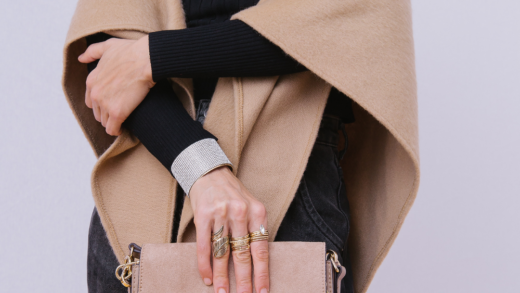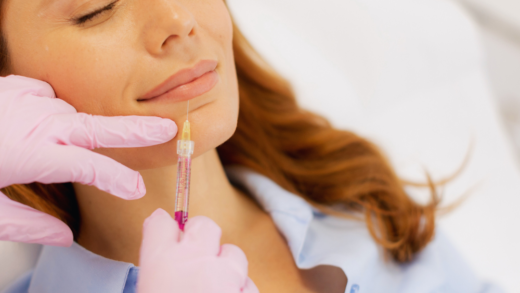Are you thinking about getting a new piercing? If so, let’s reveal the steps to follow in this blog post.
Step 1: Choosing the Perfect Piercing
- Research and Inspiration
Before you get your piercing, take some time to research different types of piercings, such as tragus and daith piercings. Browse through magazines, Instagram, or Pinterest to find inspiration. This step is crucial as it will help you decide on a style that suits your personality and preferences.
- Consult with a Professional
Once you have an idea in mind, consult with a professional piercer. For instance, Clementine Piercing is NYC’s New Favorite Studio, so you will want to check them out if you live in the area or are happy to take the trip. They can provide valuable advice based on your anatomy and lifestyle. Remember, not all piercings are suitable for everyone.
- Consider Pain Tolerance
Think about your pain tolerance level. Some piercings are more painful than others, so choose one that aligns with your comfort zone. If you’re unsure, start with a less painful option, such as earlobe or nostril piercings.
Step 2: Choosing a Piercing Studio
- Check for Cleanliness and Hygiene
The cleanliness of the piercing studio is paramount. Make sure they follow strict hygiene standards, including the use of disposable needles and sterilized equipment. A clean studio reduces the risk of infection.
- Research Reviews and Reputation
Read reviews and ask for recommendations from friends who have piercings. A studio with a good reputation is more likely to provide a safe and professional experience.
- Visit the Studio
Before committing, pay a visit to the studio. Talk to the piercer, assess the ambiance, and ensure you feel comfortable with the surroundings. Trust your instincts; if something feels off, consider another option.
Step 3: The Piercing Process
- Getting Ready
On the scheduled day, ensure you’ve had a good night’s sleep, consumed enough water, and had a light snack. This can minimize the likelihood of any lightheadedness or discomfort during the piercing.
- Documentation
Anticipate some administrative tasks like completing forms, especially a consent document. It’s a customary step to confirm your understanding of potential risks and express your agreement.
- The Piercing
The piercing itself is usually a quick process. Your piercer will mark the spot, clean the area, and use a sterile needle to create the hole. You might feel a brief pinch or pressure, but the pain is typically manageable.
- Jewelry Selection
After the piercing, your piercer will need to insert the jewelry of your choice. You can buy a few handsome pieces, of course, if you are in need, from Sticks & Stones Jewelry and similar online retailers.
- Aftercare Instructions
Listen carefully to your piercer’s aftercare instructions. They’ll provide you with a detailed guide on how to care for your new piercing to prevent infection and promote healing.
Step 4: Piercing Aftercare
- Cleaning Routine
Maintaining proper hygiene is crucial during the healing process. Clean your piercing gently with a saline solution twice a day. Avoid using alcohol or hydrogen peroxide, as these can irritate the piercing.
- Hands Off!
Resist the urge to touch or twist your jewelry, especially with dirty hands. This can introduce bacteria and delay healing.
- Avoid Swimming
Stay out of pools, hot tubs, and natural bodies of water until your piercing is fully healed. Chlorine and bacteria in these environments can lead to infection.
- Clothing Choice
Be mindful of your clothing choices. Loose-fitting, breathable fabrics are ideal, as tight clothing can rub against the piercing and cause irritation.
- Be Patient
Healing times vary depending on the type of piercing, but most take several weeks to several months. Be patient and resist the temptation to change your jewelry prematurely.
Step 5: Recognizing and Handling Complications
- Infections
If you notice signs of infection, such as redness, swelling, discharge, or excessive pain, contact your piercer or a healthcare professional immediately. Do not remove the jewelry, as it can trap the infection inside.
- Keloids and Hypertrophic Scarring
Some people are prone to developing keloids or hypertrophic scars. If you notice abnormal scarring, consult with a dermatologist for treatment options.
- Jewelry Allergies
In rare cases, people may be allergic to certain metals in jewelry. If you experience persistent itching, redness, or irritation, consult with your piercer to discuss alternative jewelry options.
Step 6: Changing and Upgrading Your Jewelry
Once your piercing has fully healed, you can start exploring different jewelry options to express your unique style. Here are some tips for changing and upgrading your jewelry:
- Consult Your Piercer
Before making any changes, consult with your piercer to ensure your piercing is ready for new jewelry. They can guide you on when it’s safe to switch.
- High-Quality Materials
Choose high-quality materials like surgical steel, titanium, or niobium to minimize the risk of allergies or irritation.
- Variety of Styles
Explore the world of piercing jewelry, which includes studs, rings, hoops, and more. Mix and match to create your own style statement. A larimar jewelry stone might be a number one choice for you, especially if you are into blue designs. Your style is your style, but that doesn’t mean you shouldn’t look outside your usual choices.
Step 7: Piercing Aftercare Do’s and Don’ts
Do’s
- Do clean your piercing as directed by your piercer.
- Do follow a balanced diet and stay hydrated to aid in the healing process.
- Do wear loose-fitting, breathable clothing to prevent irritation.
- Do consult a professional at the first sign of any complications.
- Do be patient; healing takes time.
Don’ts
- Don’t touch your piercing with dirty hands.
- Don’t twist or turn your jewelry unnecessarily.
- Don’t submerge your piercing in pools, hot tubs, or natural bodies of water until it’s fully healed.
- Don’t use alcohol or hydrogen peroxide to clean your piercing.
- Don’t change your jewelry before your piercing has fully healed.
Conclusion
By adhering to the guidelines in this comprehensive guide and maintaining diligent aftercare, you can flaunt your piercings both safely and fashionably. Bear in mind, piercings aren’t merely decorative; they signify personal expression.





